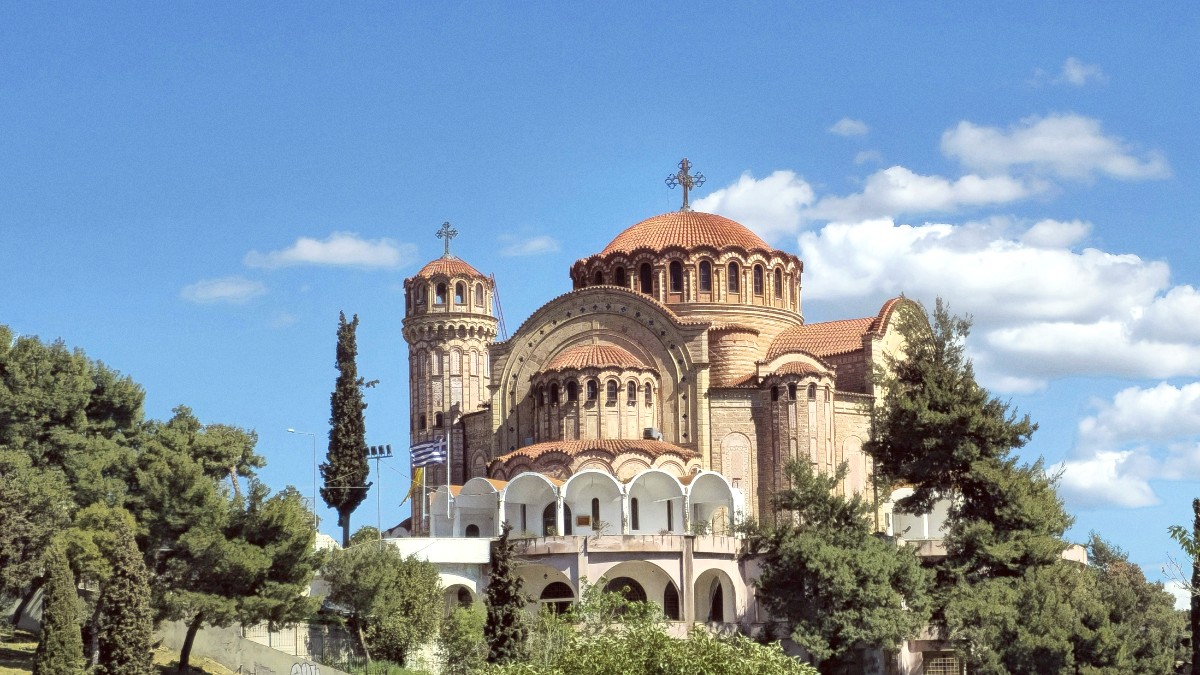
Northern Greece, Greece
Vergina (Aigai): Ancient Aigai was the first capital of the Kingdom of Macedon. It is an UNESCO World Heritage Site. It holds the Royal Tombs, including the tomb of Philip II (father of Alexander the Great). These tombs sit in an impressive underground museum built into the tumulus. Distance: Approximately 75 km (47 miles) southwest of Thessaloniki. Travel Time: Approximately 1 hour by car. 1.5-2 hours by bus (requires a change in Veria).
Pella: The birthplace of Alexander the Great and the capital of the Macedonian kingdom after Aigai. The archaeological site features impressive mosaic floors from ancient villas. A modern museum displays artifacts from the site. Distance: Approximately 40 km (25 miles) west of Thessaloniki. Travel Time: Approximately 45 minutes by car. 1 hour by bus. Dion: An ancient Macedonian city and a significant sanctuary dedicated to Zeus, located at the foothills of Mount Olympus. It features ruins of temples, theaters, and Roman baths. An archaeological museum displays findings from the site. Distance: Approximately 90 km (56 miles) south of Thessaloniki. Travel Time: Approximately 1 hour by car. 1.5-2 hours by bus (to Litochoro, then a short taxi ride). Mount Olympus: The highest mountain in Greece and the mythological home of the Olympian gods. It presents stunning natural beauty and numerous hiking opportunities. The town of Litochoro serves as a common base for exploring the mountain. Distance: Access points like Litochoro are approximately 100 km (62 miles) south of Thessaloniki. Travel Time: Approximately 1.5 hours by car to Litochoro.
Simple (transportation, guide, entry fees often included), effective for seeing multiple sites in a day, no need for navigation. It also includes context from a knowledgeable guide.
Has full flexibility over your schedule, pace, and stops. You can explore off-the-beaten-path locations. It can be more cost-effective for groups or families.
Beyond the city, Northern Greece presents diverse natural landscapes for exploration.
Axios-Loudias-Aliakmonas Delta National Park is a protected wetland area west of Thessaloniki. It matters for migratory birds and biodiversity.
Halkidiki Peninsula is famous for its 'three legs' (Kassandra, Sithonia, Athos). It boasts pristine beaches, turquoise waters, and lush green forests.
Spring shows a bloom of wildflowers. Spring and autumn are prime seasons for birdwatching at the Axios Delta.
Peraia and Neoi Epivates are closest to Thessaloniki. For more spectacular beaches, head to Halkidiki (e.g., Sani, Kallithea on Kassandra, Vourvourou on Sithonia).
Mount Olympus presents opportunities for hiking. Mount Kerkini, near the Bulgarian border, has a lake and wetlands. The vineyards of Naoussa or Amyndeo offer picturesque rural landscapes.
Explore historical and spiritual sites beyond Thessaloniki's immediate vicinity.
A UNESCO World Heritage Site located near Kavala, about 2 hours east of Thessaloniki. It is an ancient city founded by Philip II. It became an important Roman colony and the place where St. Paul first preached in Europe.
An archaeological site located east of Thessaloniki, approximately 1.5 hours away. It features a famous ancient tomb complex (Kasta Tomb) and the impressive Lion of Amphipolis monument.
Arnaia (Halkidiki): A traditional Macedonian village in central Halkidiki, known for its well-preserved architecture and local crafts. Agios Nikolaos (Sithonia, Halkidiki): A charming fishing village with traditional tavernas and a relaxed atmosphere.
Naoussa/Amyndeo: These are wine-producing regions with picturesque vineyards and wineries. They have tours and wine tasting sessions.
Mount Athos: The 'Holy Mountain' is an autonomous monastic state. Entry has high restriction to male Orthodox pilgrims with special permits only. Boat tours around the peninsula are available for others. These views the monasteries from a distance. Tours depart from Ouranoupoli (approximately 2 hours from Thessaloniki). Meteora: (Long day trip or overnight). A UNESCO World Heritage site featuring stunning monasteries perched atop towering rock formations. This is a major spiritual and geological wonder. It is an unique and inspiring place.
Autonomous monastic state. Restricted entry for male Orthodox pilgrims. Boat tours offer distant views.
Stunning monasteries atop rock formations. UNESCO World Heritage site. A spiritual and geological wonder.
Meteora is a long day trip; an overnight stay works well for fuller exploration.
Extend your trip to explore more of Northern Greece or connect to other parts of the country.
An overnight stay allows for more relaxed exploration of the monasteries and catching sunrise/sunset views. Combine with a visit to Kalambaka town for dining.
Stay on one of the peninsulas (Kassandra or Sithonia) to fully enjoy the beaches, charming villages, and natural beauty.
Stay in a guesthouse in a wine-producing region. Visit wineries, participate in tastings, and enjoy local cuisine paired with regional wines.
Thessaloniki -> Pella/Vergina -> Dion/Litochoro -> Meteora (overnight) -> Ioannina/Zagori (overnight) -> return to Thessaloniki or continue to Athens. This route covers historical, natural, and spiritual highlights.
Thessaloniki -> Halkidiki (multi-day beach stay) -> Kavala -> Thassos Island (via ferry from Kavala). This route focuses on the beautiful coastline and islands.
Consider G Adventures for ethical tour options.